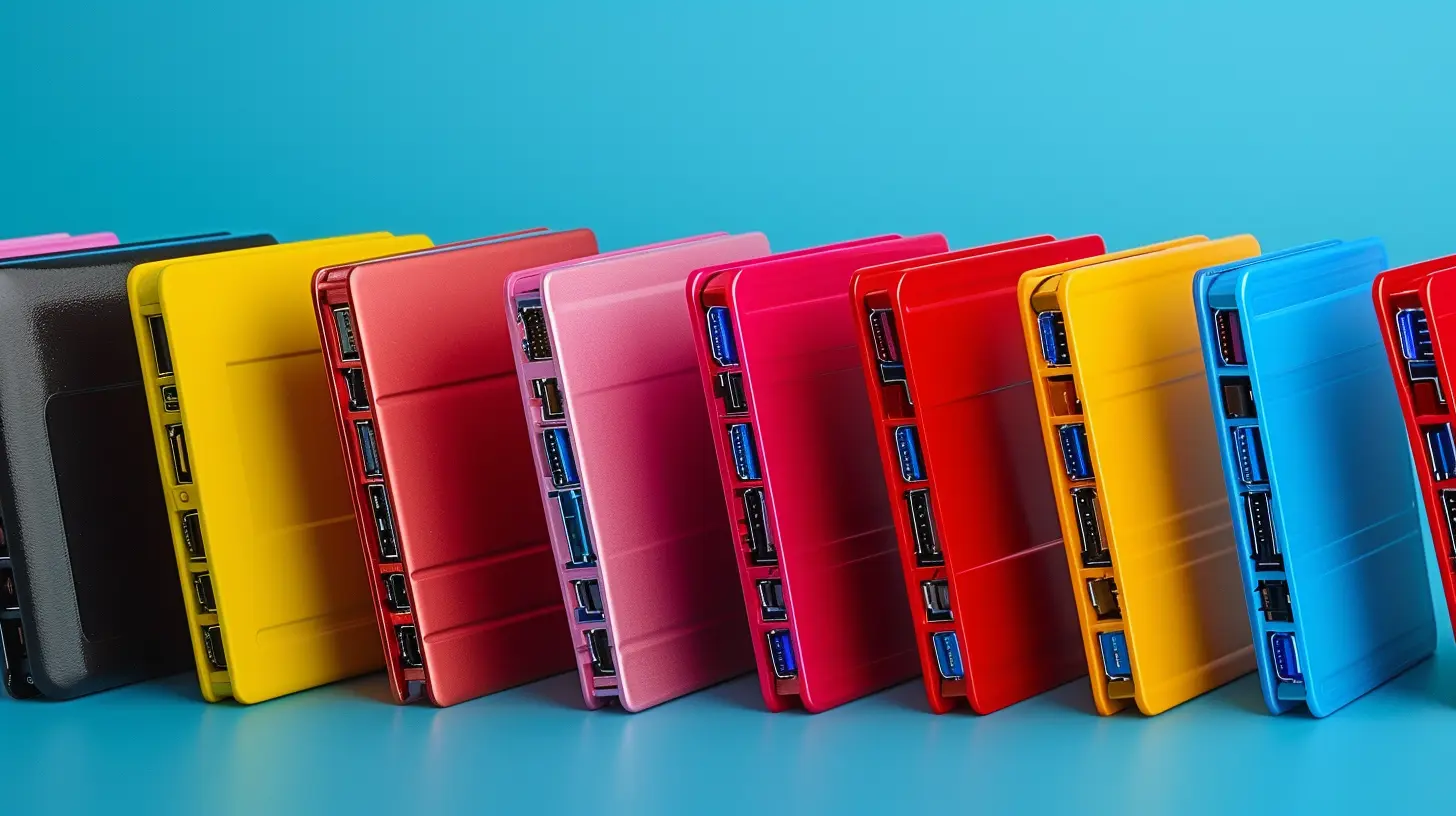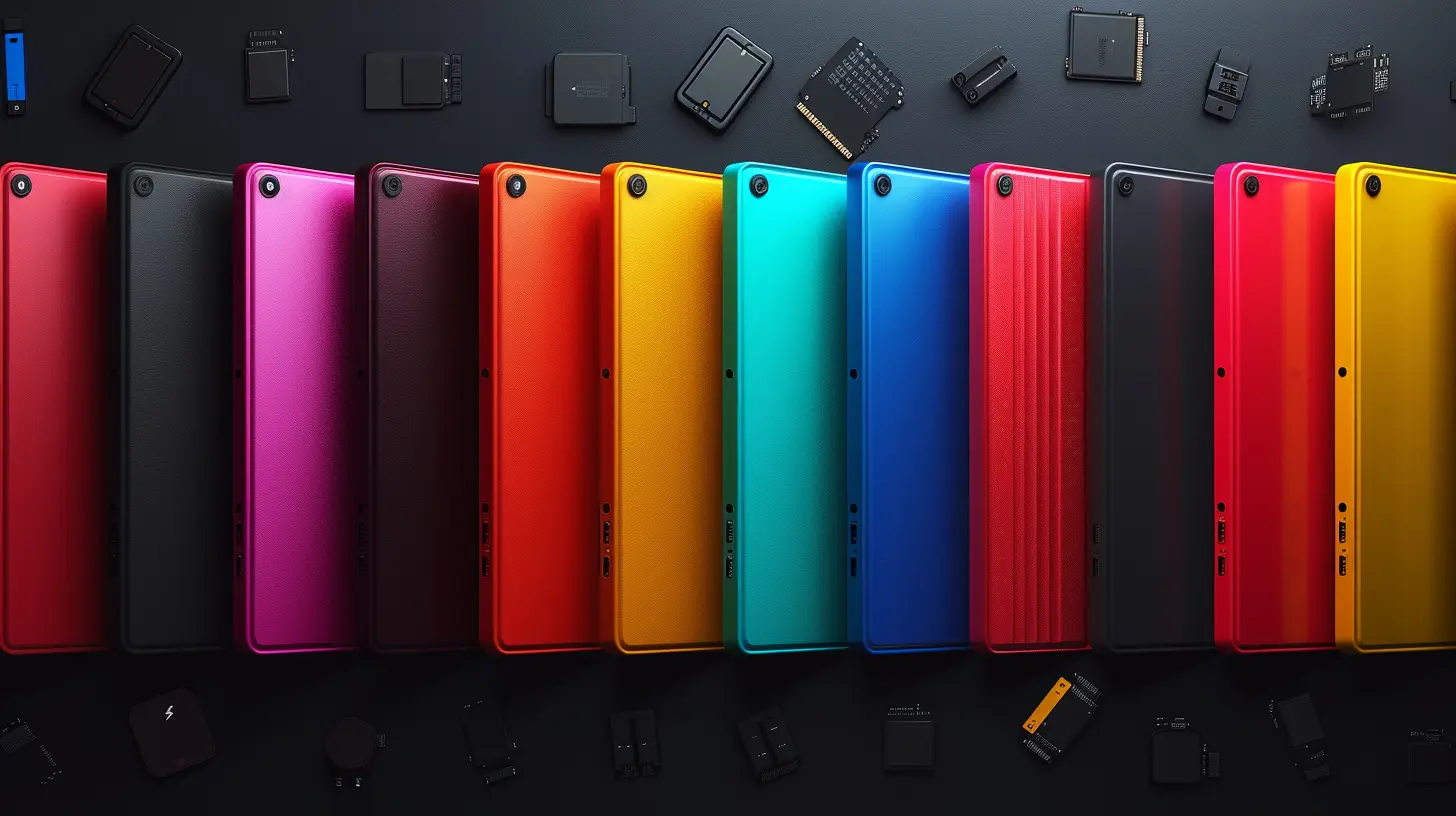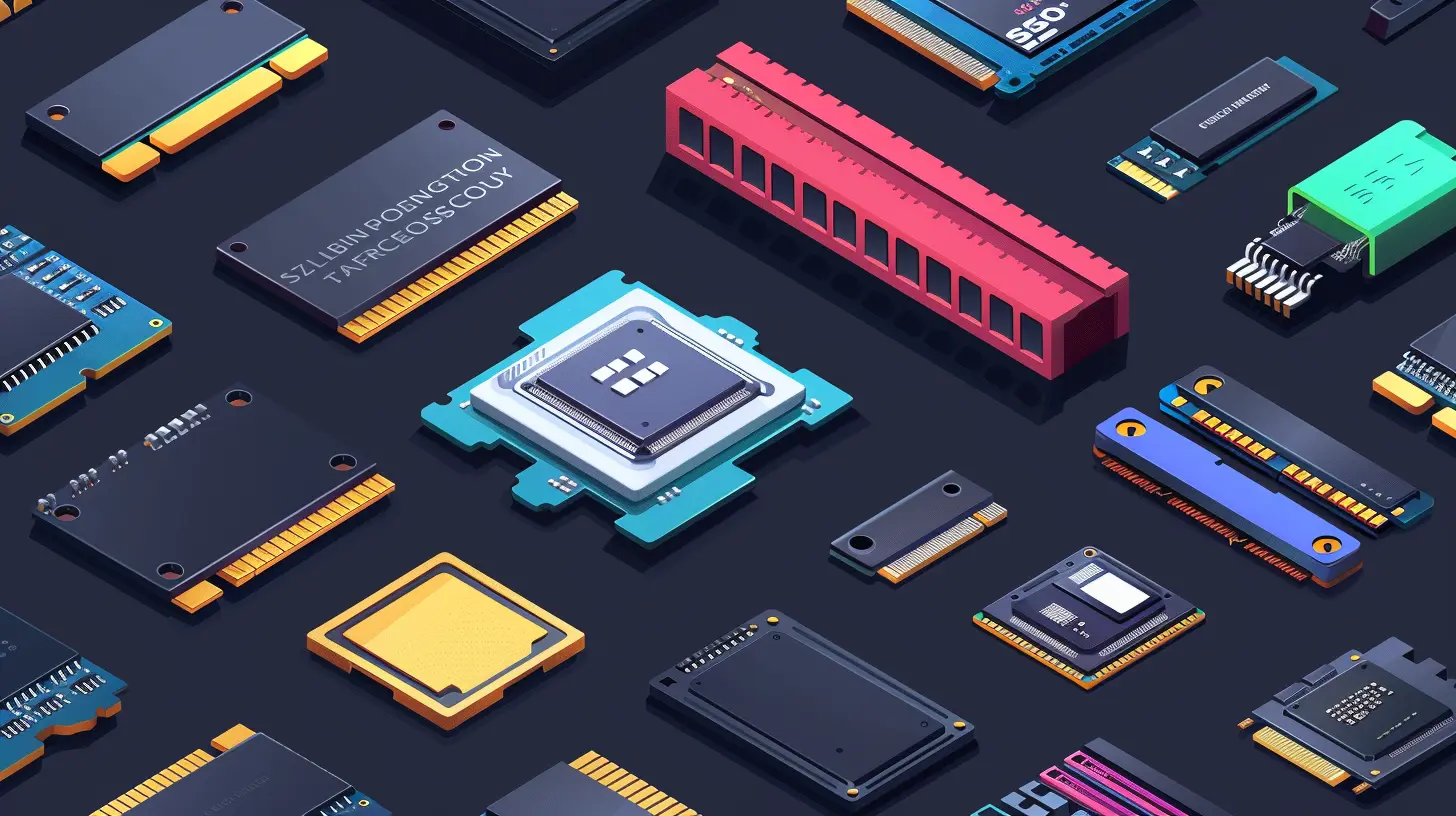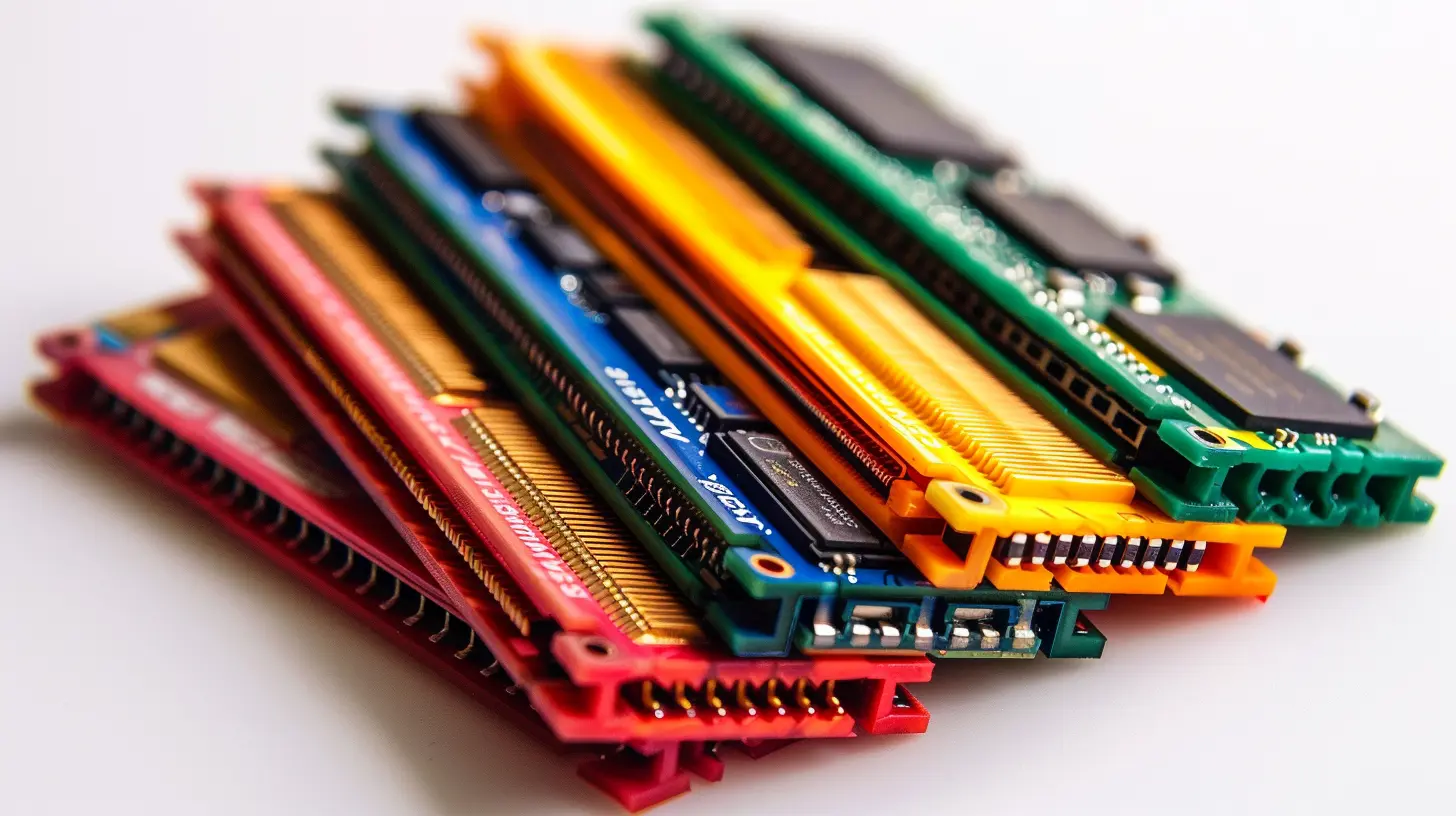Understanding the Different Types of SSDs: Which One Is Right for You?
24 October 2025
SSDs (Solid State Drives) have completely revolutionized storage technology. If you're upgrading your computer or building a new one, choosing the right SSD can significantly impact your system’s speed and performance. But with so many types of SSDs available, how do you know which one is the best fit for your needs?
In this guide, we'll break down the different types of SSDs, their strengths and weaknesses, and help you decide which one suits your requirements.

Why SSDs Matter
Before diving into the different types, let's quickly touch on why SSDs are a game changer. Unlike traditional hard drives (HDDs), SSDs have no moving parts, which means they are faster, more durable, and energy-efficient. They reduce boot times, make applications load quicker, and improve overall system responsiveness.But not all SSDs are created equal. Their performance, form factor, and interfaces vary significantly. Let’s break them down.
Types of SSDs: What You Need to Know
SSDs come in different form factors (physical shapes) and interfaces (how they connect to your computer). The main types include:- SATA SSDs
- NVMe SSDs
- M.2 SSDs
- PCIe SSDs
- U.2 SSDs
- External SSDs
Each of these types has its unique advantages. Let's explore them.
1. SATA SSDs – The Budget-Friendly Choice
📌 Best for: General users, older systems, upgrading from HDD
SATA (Serial ATA) SSDs are the most common and affordable option. They use the SATA interface, which was originally designed for HDDs, making them a great plug-and-play upgrade for older computers.🔹 Pros:
- Affordable and widely available
- Easy to install on any system with a SATA port
- Significant speed improvement over HDDs (500-600 MB/s read & write speeds)
🔹 Cons:
- Slower than NVMe SSDs
- Limited by the aging SATA interface
Who should buy it?
If you’re upgrading from an HDD and don’t want to spend too much, a SATA SSD is a great choice. It won’t give you the fastest speeds, but it’s still a huge upgrade over traditional hard drives. 
2. NVMe SSDs – The Speed Demon
📌 Best for: Gamers, content creators, power users
NVMe (Non-Volatile Memory Express) SSDs are much faster than SATA SSDs because they use the PCIe (Peripheral Component Interconnect Express) interface, designed specifically for fast storage.🔹 Pros:
- Blazing-fast speeds (Up to 7,000 MB/s on newer models)
- Low latency and near-instantaneous data access
- Perfect for gaming, video editing, and large file transfers
🔹 Cons:
- More expensive than SATA SSDs
- May require an M.2 or PCIe slot
Who should buy it?
If you’re a gamer, creative professional, or someone who works with large files, an NVMe SSD is worth the investment. The speed difference can transform your workflow and overall computing experience.
3. M.2 SSDs – Compact and Versatile
📌 Best for: Laptop users, compact builds, performance seekers
M.2 is a form factor that refers to the physical shape of the SSD. M.2 SSDs can use either SATA or NVMe interfaces, so it’s important to check which one you're getting.🔹 Pros:
- Small and compact, perfect for thin laptops
- No cables required (plugs directly into the motherboard)
- Can offer NVMe-level speeds (if using an NVMe interface)
🔹 Cons:
- Some older motherboards may not support M.2 SSDs
- NVMe M.2 SSDs can get hot and may require heatsinks
Who should buy it?
If you have a modern laptop or a compact desktop build, an M.2 SSD is a great choice. Just make sure to check whether it’s a SATA or NVMe version before purchasing.
4. PCIe SSDs – The High-Performance Champion
📌 Best for: Workstations, high-end gaming, professional applications
PCIe SSDs connect directly to the motherboard via PCIe slots, offering exceptional performance for demanding tasks.🔹 Pros:
- Ultra-fast data transfer rates
- Ideal for high-performance applications like AI, 3D rendering, and video production
- Lower latency than SATA and NVMe SSDs
🔹 Cons:
- Expensive
- Takes up PCIe slots, which may be needed for other components
Who should buy it?
If you’re running a high-end workstation or need the absolute fastest storage, PCIe SSDs are the way to go. However, for most users, NVMe M.2 SSDs provide a great balance of speed and price.
5. U.2 SSDs – Enterprise-Level Performance
📌 Best for: Servers, data centers, professional workstations
U.2 SSDs are less common for everyday users but are widely used in enterprise environments. They offer high-speed performance while supporting hot-swapping (removing the drive without shutting down the system).🔹 Pros:
- High capacity and enterprise-level durability
- Supports hot-swapping
- Uses the PCIe interface for fast speeds
🔹 Cons:
- Bulky compared to M.2 SSDs
- Expensive and overkill for most standard users
Who should buy it?
Unless you’re managing a server or enterprise-level storage, you probably won’t need a U.2 SSD.
6. External SSDs – Portable and Convenient
📌 Best for: Backup storage, portable needs, content creators on the go
External SSDs are ideal for storing large files and carrying them with you. They connect via USB or Thunderbolt, making them compatible with almost any device.🔹 Pros:
- Portable and easy to use
- Faster than external HDDs
- Great for backups and transferring files between devices
🔹 Cons:
- More expensive than external HDDs
- Speed depends on the connection type (USB 3.2, Thunderbolt, etc.)
Who should buy it?
If you need a reliable external storage solution for backups, video editing, or travel, an external SSD is a fantastic choice.
Which SSD Is Right for You?
Choosing the right SSD depends on your needs and budget:- Budget users ➜ Go for a SATA SSD for an affordable speed boost.
- Gamers & power users ➜ NVMe SSDs offer the best performance.
- Laptop or compact PC users ➜ M.2 SSDs save space while providing high speeds.
- Workstations & professionals ➜ PCIe SSDs or NVMe SSDs deliver top-tier performance.
- Server & enterprise users ➜ U.2 SSDs handle massive data loads.
- Portable storage seekers ➜ External SSDs provide convenience and speed.
Final Thoughts
SSDs have transformed the computing experience, making systems faster and more responsive. Whether you're looking for a budget-friendly option or a top-of-the-line performance beast, there’s an SSD for you.Before purchasing, always check your motherboard compatibility, storage needs, and budget. Investing in the right SSD can be one of the best upgrades you can make for your device!
all images in this post were generated using AI tools
Category:
Computer HardwareAuthor:

Marcus Gray
Discussion
rate this article
1 comments
Harmony McWilliams
Great article! Navigating SSD options can be overwhelming, but your clear breakdown makes choosing the right one so much easier!
October 30, 2025 at 11:58 AM

Marcus Gray
Thank you! I'm glad you found the breakdown helpful. Happy SSD shopping!


